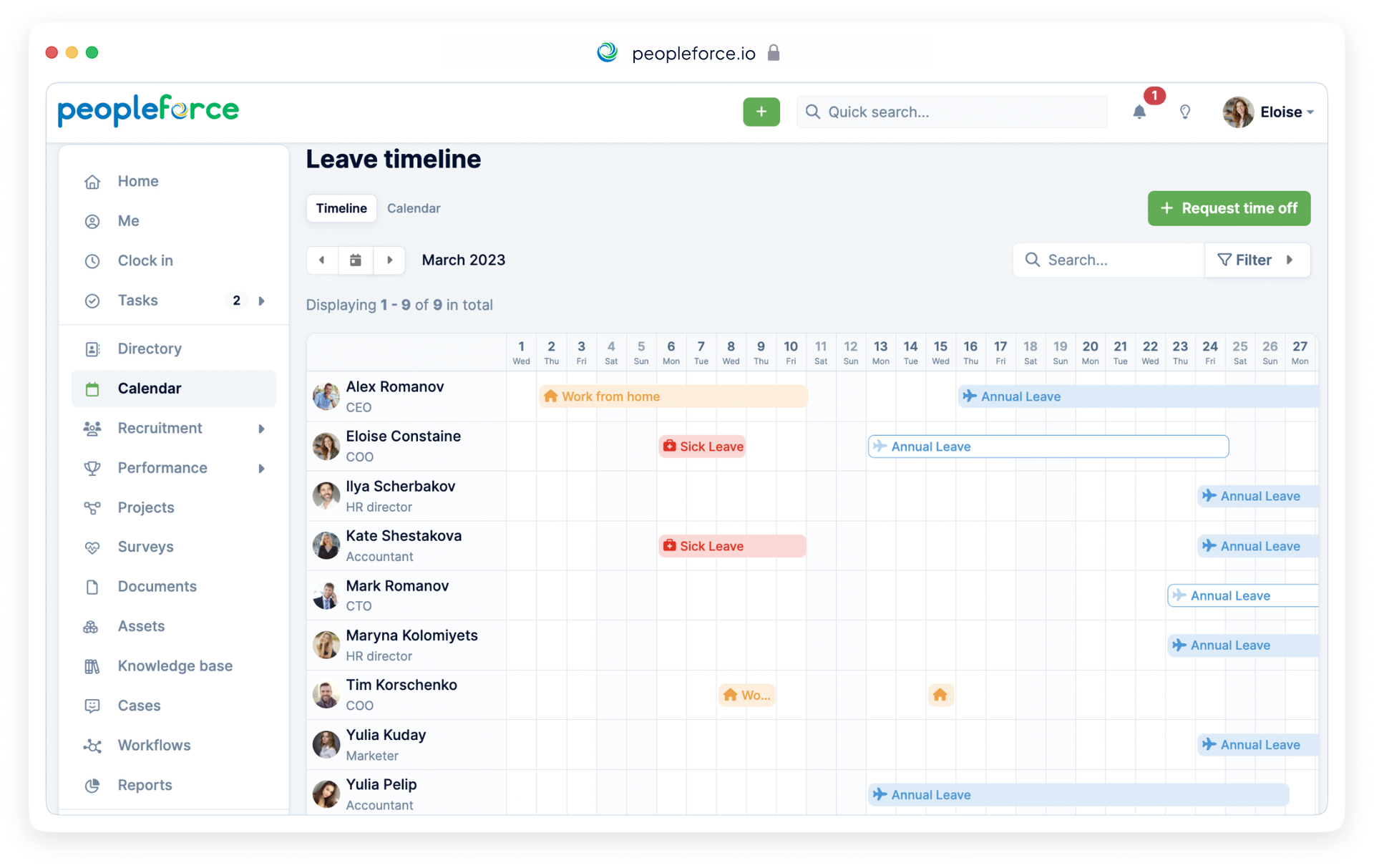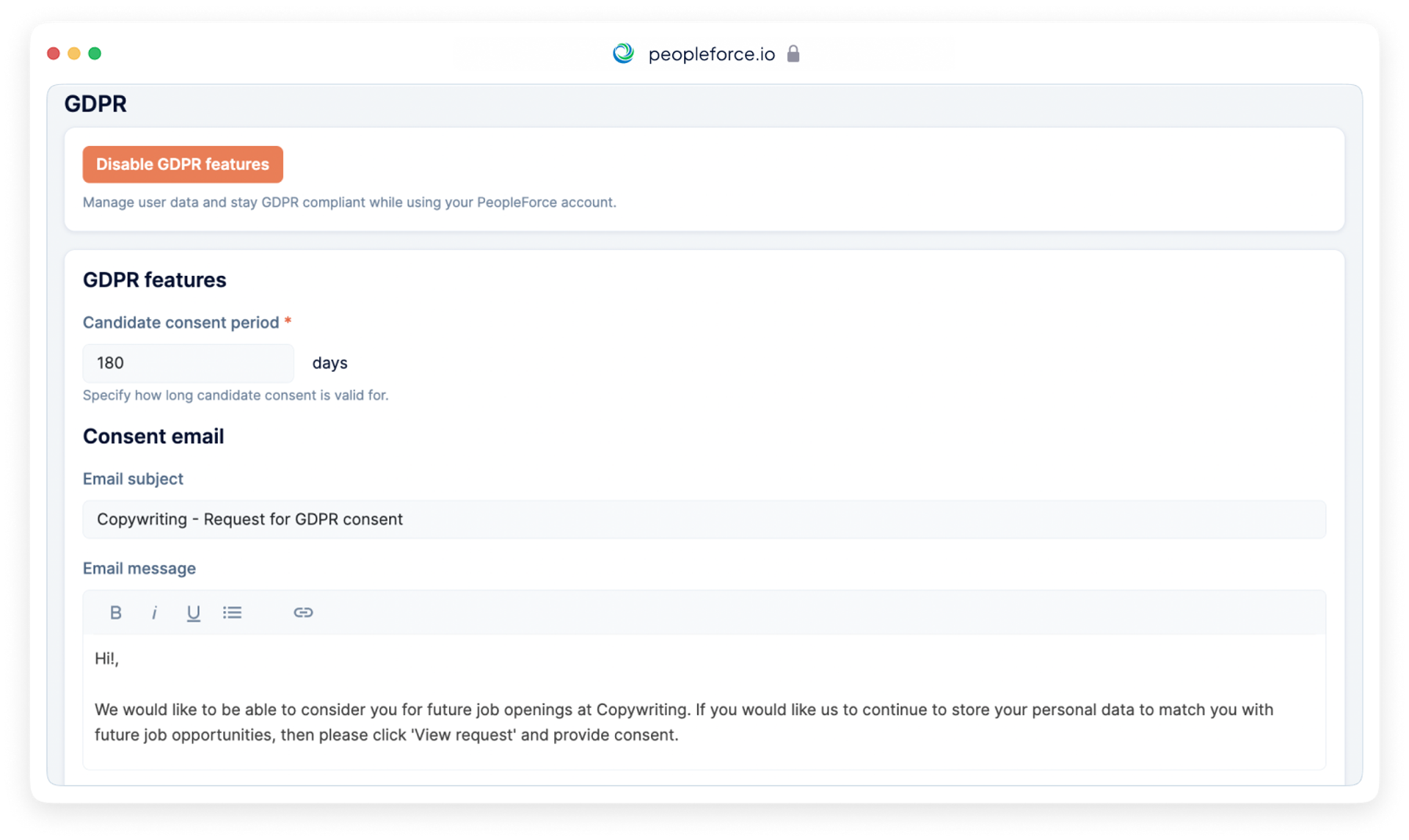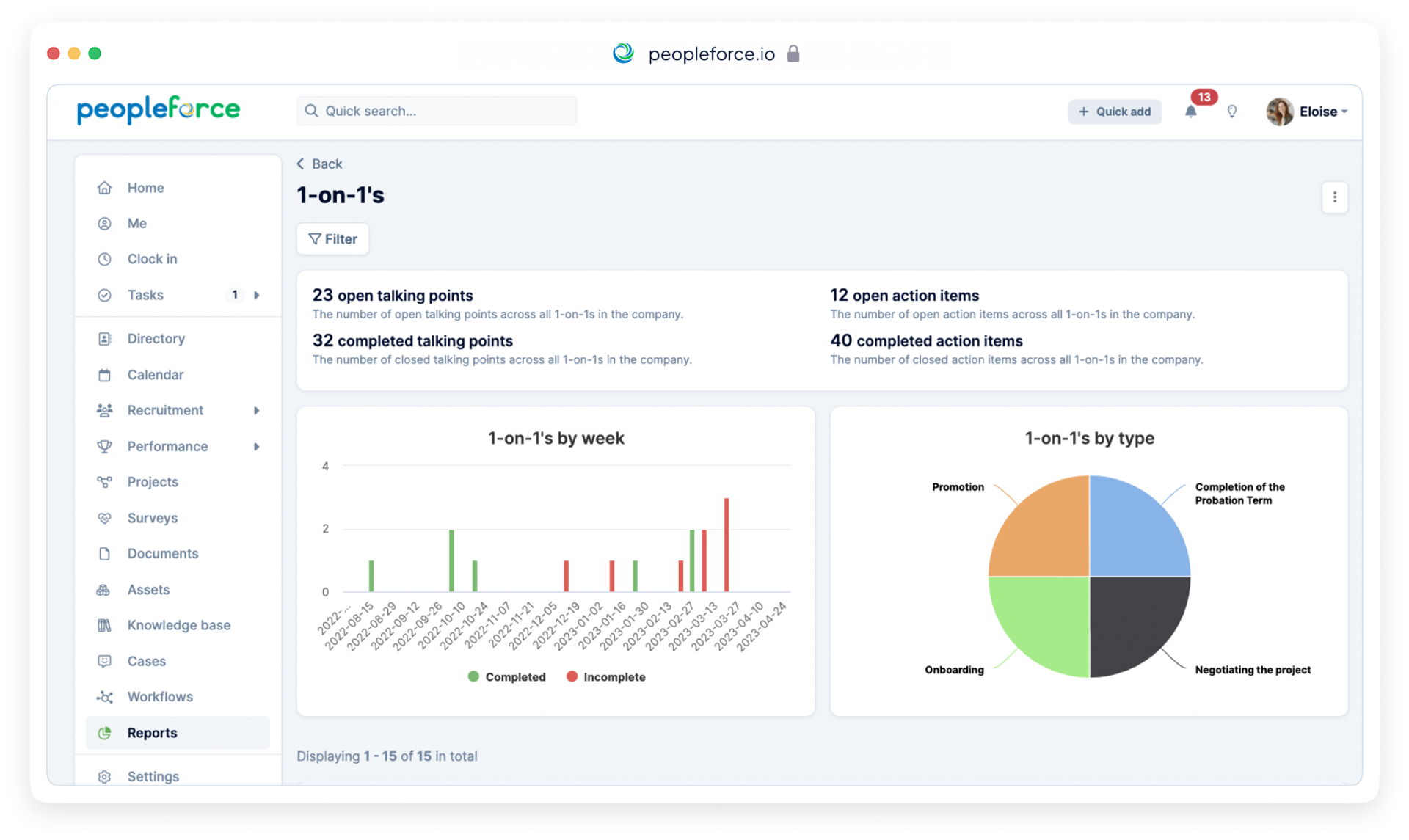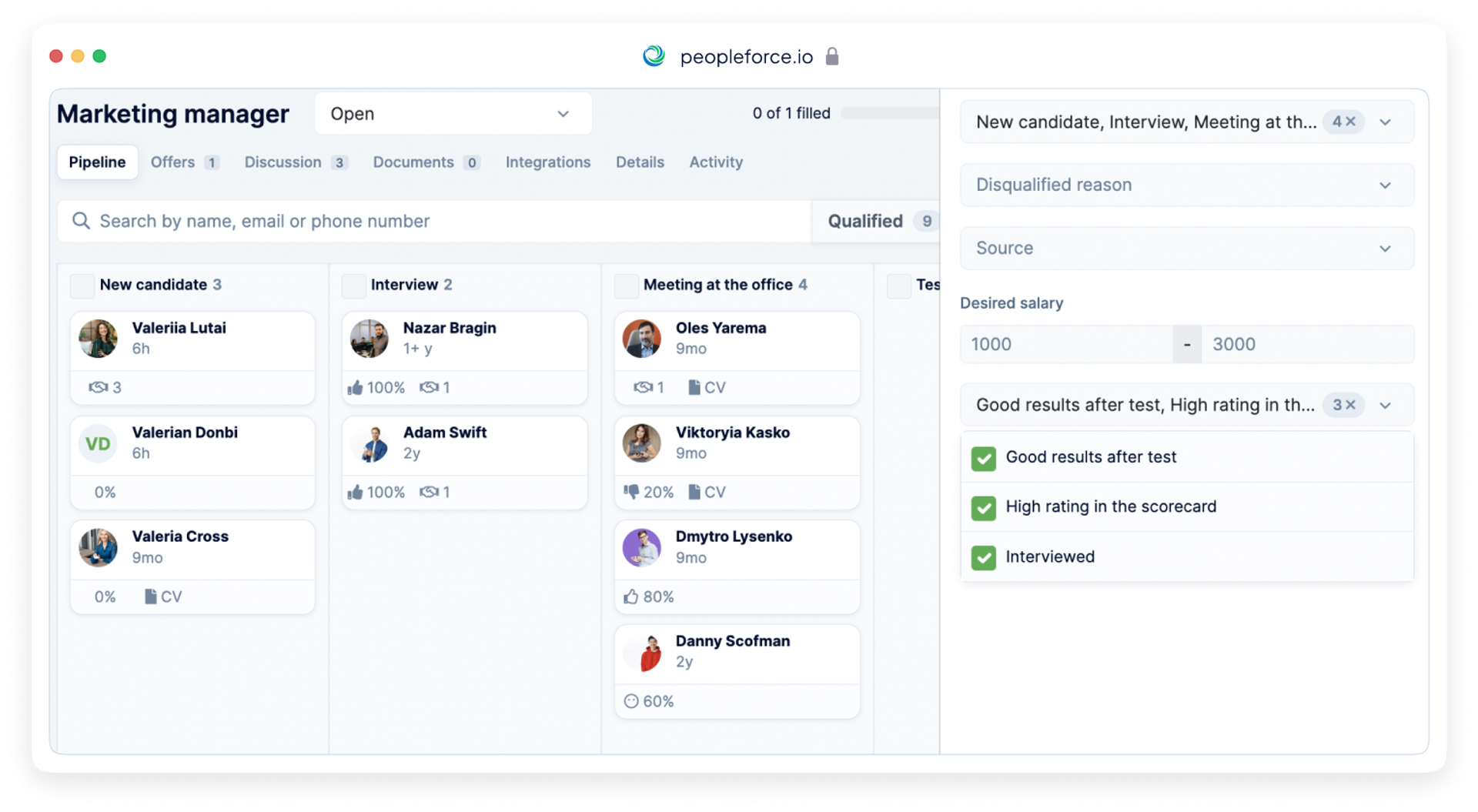
10 reasons why you need cloud-based HR software
This year is likely to pose challenges to our economies in general and to the HR industry in particular. The best way to prepare for an uncertain market, characterized by rising unemployment and inflation, and increased costs, is to invest in software that will help support your company’s operations.
One of the best tools you can select as part of this initiative is cloud-based HR software, as this will keep your finger on the pulse of your company and ensure you can properly manage your colleagues.
Cloud-based HR software enables you to store data on remote servers in vast amounts, which in turn, can be used to create automated HR processes. You can then automize a huge number of your routine processes and get back to focusing on more strategic matters. Let's take a look at some of these benefits in more detail.
The best cloud HR software means no more paperwork
Think back just 20 years and imagine how many of your day-to-day tasks would have been pure paperwork… That's a rather basic plan that you can do without, after all, it's better to automate repetitive tasks.
Using multiple word docs and spreadsheets is better for sure, but in 2023 they represent the modern-day equivalent of using the large paper binders of old - It’s inefficient and lacks security. The solution is to use HR management (HRM) software that’s connected to a cloud.
A cloud-based HR software system stores all your important paperwork in one secure location that’s easily accessible to verified employees. Instead of having to wade through spreadsheets, word documents, and maybe even paper-based binders, you can search for and access the information you need with just a few clicks. On PeopleHR for example, you can check info about your employees on our dedicated calendar.

Improved employee engagement
Making sure your HR personnel are as engaged as possible significantly boosts your company’s overall productivity so you’ll be pleased to note that it’s one of the after-effects of adopting cloud-based HR software. As all of your crucial data is stored in one location, it’s simple for your team to access and utilize whatever they may need. As a result, staff members will be better able to take the initiative on their own terms.
One of the best ways to gather this data is to use surveys that are designed to gauge the engagement of your employees. PeoplePulse, one of the modules that make up the PeopleForce HR management software suite, allows you to measure job satisfaction, boost loyalty via increased inclusion, and analyze engaging responses, all key HR tasks.
But engagement goes beyond just having access to data; cloud-based HR software is accessible across multiple devices in multiple locations. This means that no matter where your employees are in the world they’ll still have access to the same information as they would at their office. As a result, they can adopt working practices more conducive to personal growth, improving their morale and corporate engagement.

Cloud HR software means increased data security
Cloud-based HR software is designed to protect your company’s data. This helps prevent data leakage as well as hacking attacks. This isn’t just an excellent way to make your HR department more efficient, it also boosts your brand appeal as a company with good security policies is more attractive.
Consumers and clients alike are also aware of their personal information rights and expect the companies they patronize to protect them. Companies that are able to offer this guarantee don’t just meet the needs of their customers, they also significantly boost their brand image in the process. The only way that you’ll be able to meet this demand, and properly protect the data of your users, is by using a quality cloud-based database.
To make sure that you’re choosing the best quality option you should look for ISO Certification. Companies that have received this are recognized as having met certain standards set by the International Organization for Standardization (ISO), emphasizing that the data they store is protected to the highest possible standards. PeopleForce currently holds ISO Certification.
Simpler data legislation compliance
When GDPR was introduced by the EU in 2018 many companies were caught off guard despite the fact that implementation had long been telegraphed. Despite the rocky start most companies working with data in Europe are now fully compliant, but they can’t afford to rest on their laurels. There are dozens of other data and information regulatory acts to consider worldwide, and cloud-based HR software helps ensure your team is adherent.
That’s because most data legislation requires that private information is stored securely and can be accessed by all interested parties. The cloud provides this controlled access and is far more secure than any alternative systems, and can also be aligned with all relevant information acts. These include HI7/FHIR, HIPAA, DPA, as well as GDPR.

HR processes & data analytics
Imagine if you could monitor everything that every member of your HR department is working on at any given moment. Imagine that all of the information they create during this process is easily viewable on a dashboard, allowing your team to act on it.
This is what a cloud-based HR software system can offer your company as it collects all of the data your team creates and processes, and turns it into information you can use. All the information collected by your organization can then be displayed on a dashboard, allowing you to track everything in real-time and act to improve your performance.
You can monitor key HR metrics like time to hire (time from first contact with the candidate until they are hired), hiring funnel, staff turnover, and a number of other factors. When delivered in real-time, these metrics and their counterparts help you to get insights about your business and make the right decisions for your team. You can also use HR analytics to better plan factors like employee leave for example, which will help you to minimize disruption caused by absences.

Remote management systems are improved
Remote working has become an accepted norm ever since the COVID-19 pandemic began. With this concept comes a greater requirement for trust in workforce management, as it is naturally more difficult to monitor the activities of employees if they are working from their living rooms and not from the office. Naturally, no company should adopt a policy that would make talent management more difficult like restricting from-home working completely, but it is important to control the remote working process.
Cloud-based HR software systems are essential workforce management tools as they can be used to centralize all the key information and activities of remote workers in one location, allowing managers to monitor what they’re doing and if they’re meeting their goals. This allows managers to monitor who’s on vacation, the mental well-being of their employees, company news, and ensures that they can provide such relevant information to remote teammates. You don’t have to worry about any of your employees missing out on crucial events or key projects, you’re still in control.
This helps employees working from home too as they’ll enjoy a better understanding of how their colleagues are performing as well. This highlights one of the key benefits of using cloud-based HR tools; it creates a data ecosystem where all share and all benefit, whether they’re at home or at the office.
Cost-effective recruitment and hiring
Most HR professionals will have some sort of applicant tracking system in place but this will often be limited in scope. Other teams may still be posting job vacancies manually, shifting through piles of resumes without any support, and setting up interviews one by one. Not only does this take up a considerable amount of time it can be expensive too, and it impacts on strategic factors like payroll data and payroll systems in the long term.
The best way to improve your applicant tracking and hiring process is to use a cloud-based HRM system that automates all of the factors outlined above. Instead of having to go through every stage manually, the system does it for you, allowing you to concentrate on the more qualitative aspects of hiring that AI can’t do for you. This saves you time and money, and you can then make data-driven decisions on talent management for your HR team.
For example, with PeopleRecruit you can integrate your cloud, along with your applicant tracking system, with multiple job sites at the same time to automate vacancy notifications. When an applicant begins the recruitment process you can also integrate their information with calendars, as well as workplace tools like Google Suite and Microsoft Office.
It’s also important to create customized vacancy funnels for each job posting as this will ensure the process meets the exact requirements of your company. Applicants will then flow through the recruitment funnel efficiently, and you’ll also be able to screen unsuitable candidates quickly by verifying employee qualifications.

Cloud-based HR systems provide real-time decision-making options
Companies increasingly work across time zones and borders which makes tracking all the information you collect, the decisions your employees make etc, absolutely crucial. You need to do this to ensure that you’re staying within your budget and on track to meeting your KPIs, OKRs, etc. You can’t rely on your watch to keep you on time, or on piles of paperwork to give you the data you need; Only a cloud-based HRM system will help you make the most of your enterprise resource planning.
Using a time management tool like PeopleTime as a part of a cloud-based software suite will ensure that you can monitor every aspect of your operations and HR data in-real time. You can make decisions rapidly based on accurate data across all your various projects. Not only is this particularly useful for companies working across multiple time zones, but it’s also very helpful for teams with remote workers.
This will allow your team to identify actionable insights that can be used to cut costs and boost your overall efficiency, for example, by using a performance management module to identify which of your employees need support with their career management.
Cloud computing equals integration options
Almost every company that realizes it needs a cloud-based HRM system will more than likely already be using a number of apps, software suites, etc. It’s often assumed that an HRM system will replace all of these items but the hallmark of a good system is being able to integrate other tools into its processes. This should form part of creating the unique HR system you need for your organization.
The PeopleForce HRM system for example is easily integrable with a number of popular apps and tools, ranging from Slack and Telegram for messaging, to Zapier for third-party interactions, and Google and Microsoft working suites. Thanks to the cloud, you’ll never lose data from these integrated apps either as everything will be stored on your server. Thus, you can go even further in creating a cloud-based HRM system that’s as useful to you as possible.
Cloud-based HR software means better performance management
The advantages of cloud-based HR software are clear to see and every company that has an HR department would do well to invest in it. You will have your own specific needs and requirements for the tool that you will adopt so it’s a good idea to select one that can be customized to create a truly unique human resources ecosystem. The modular flexibility offered by PeopleForce offers this and much more.
Our system includes modules dedicated to centralized HR management, recruitment and application tracking, personnel performance, time tracking, and much more. So if you want to learn more about what PeopleForce can do for your team, or if you’re still a little unsure despite the points outlined above, then contact us. One of our experts will happily walk you through creating your own unique cloud-based HR software ecosystem.
Get started with PeopleForce today
Automate your HR routine to create a high performance culture in your company. PeopleForce is your best HRM alternative to stay business driven but people focused.

Recent articles
Top 25 methods of hiring pre-screening
Pre-screening is a preliminary assessment of the professionals with whom we will have to collaborate with. In this case, we are only interested in working skills/hard skills.
What is an HRMS? - test
An HRMS is a CRM system focused on your own people, not your customers, with tools and supporting technologies to help you attract, engage and retain the right people for your company's success.
PeopleForce announces $2 million in seed funding led by Pracuj Ventures
We are thrilled to announce a $2 million follow-on investment led by Pracuj Ventures

